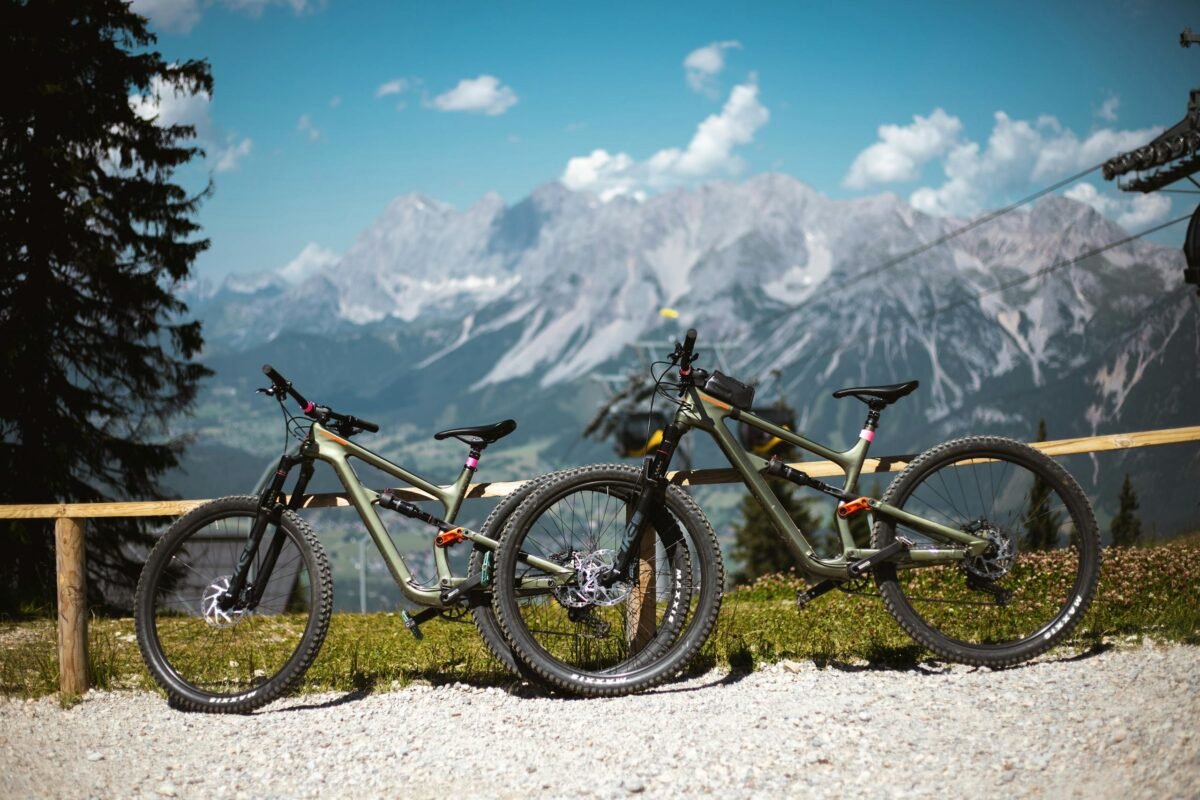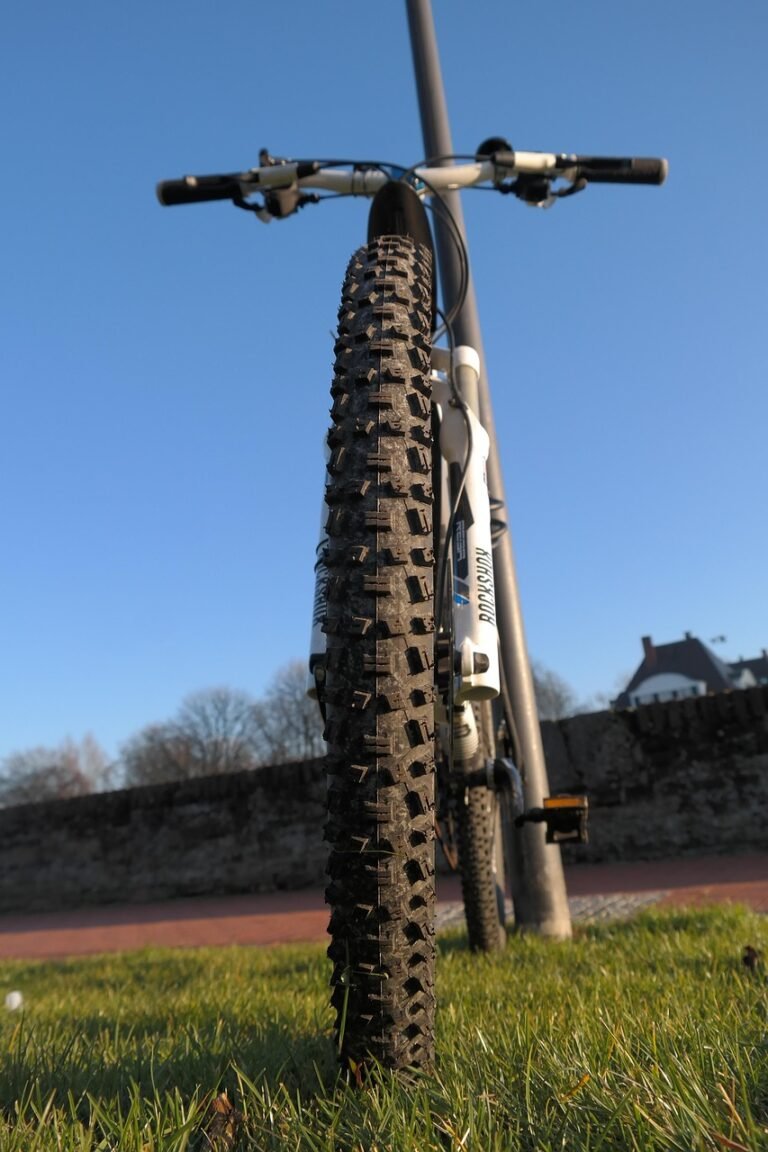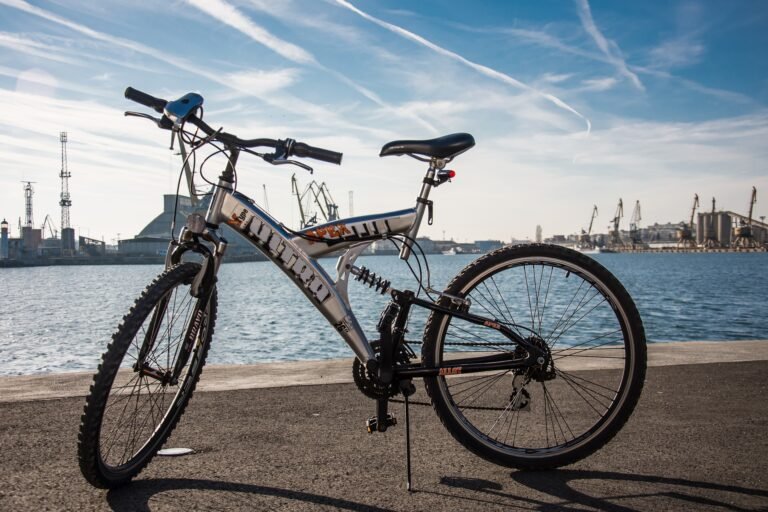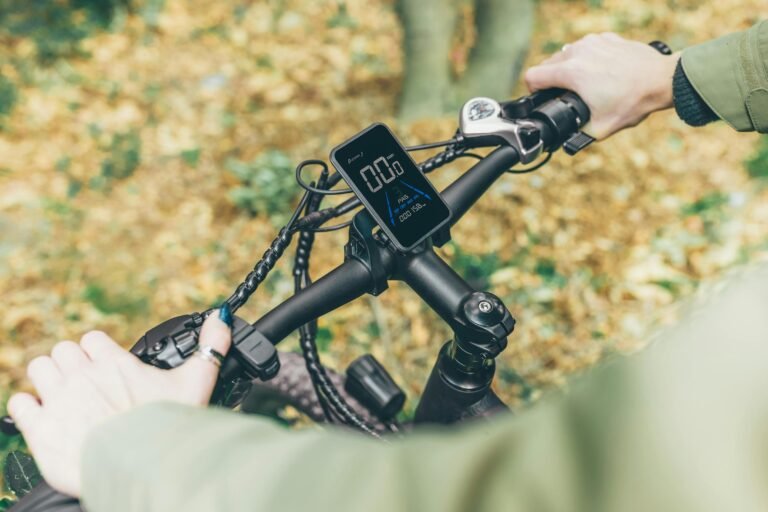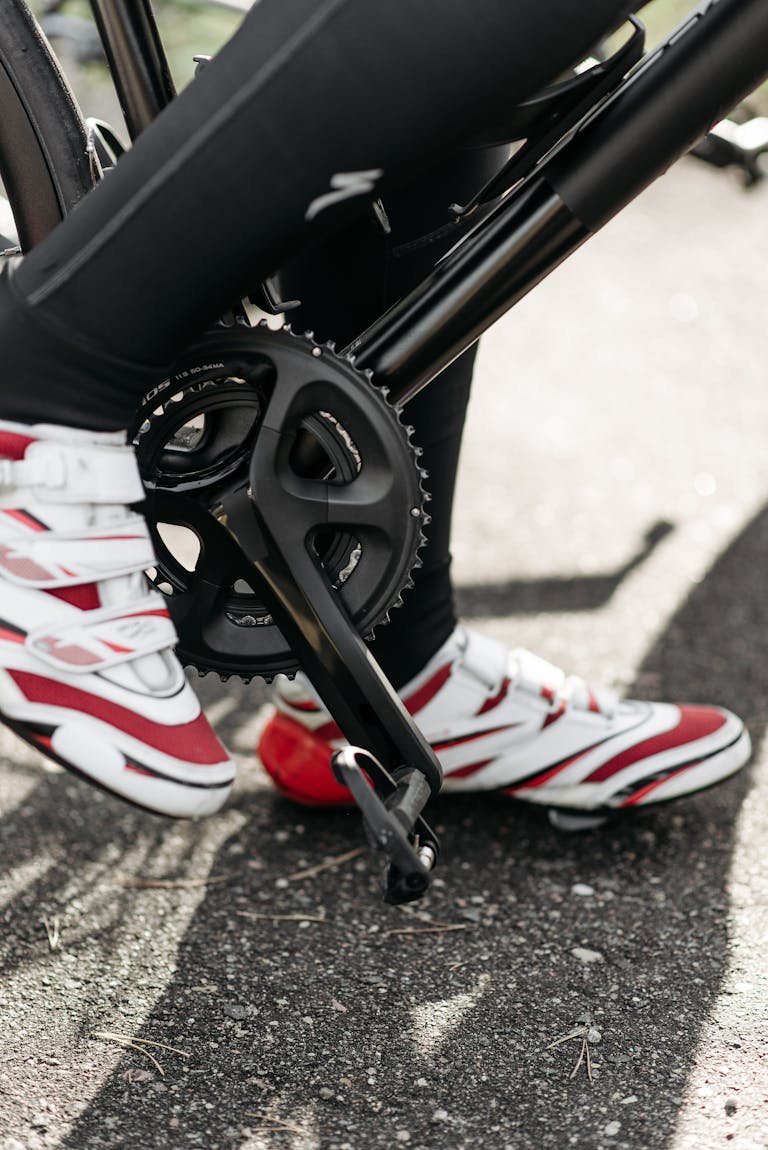3 Best Mountain Bikes of 2024: Complete Buyer’s Guide & Reviews
Let’s get right into it. The 3 Best Mountain Bikes of 2024 will be our topic of discussion. In 2023, the number of participants in mountain/non-paved surface biking reached over 9.2 million. This represented a 4.1 percent increase from the previous year.
Whether you’re smashing a single track or exploring cross country trails, having the right mountain bike can make all the difference! I’ve spent countless hours reviewing and comparing the latest MTBs to bring you this comprehensive guide. Now let’s dive into the best mountain bikes of 2024!
How I Reviewed and Selected The Top Picks

I poured over reviews and asked friends in my biking community for their opinions. My review process kicked off with considering a diverse group of bikes. Feel free to check out my article of bike frames for a deeper dive.
I considered every mechanical issue, every maintenance need, and even how well the paint held up (because nobody wants their $3,000 investment looking beat up after one season).
For value assessment, I didn’t just look at the price tag. I analyzed the cost per mile, factoring in maintenance requirements and durability.
I also consulted with bike shop owners, and even interviewed riders at my local singletrack trail about their long-term experiences. This helped me understand not just how bikes performed out of the box, but how they held up over time – crucial info you rarely find in typical reviews.
My 3 Best Mountain Bikes of 2024 are below:
When it comes to actually picking the top 3, I still struggle with this. But here it goes. In my opinion, here’s what you’re looking at for some winners:
After pining through reviews, here’s my definitive breakdown of 2024’s top mountain bikes. These three stood head and shoulders above the competition, though each has its own quirks and sweet spots.
- Specialized Stumpjumper
- Canyon Neuron
- Yeti SB
The standout features identified weren’t just hype – they can make a real differences on the trail. Like that new suspension design on the Yeti SB that absolutely transformed technical climbs, or the updated geometry on the Specialized that made descending feel like floating on air.
Looking back at it all, this year’s lineup is genuinely impressive. These bikes aren’t just incrementally better – they’re solving problems that riders have struggled with for years. And while no bike is perfect, my top picks represent the best balance of performance, durability, and value for their intended use cases. Let’s discuss them each in detail. For a comprehensive guide on bikes for every terrain check out my article on the Best Mountain Bikes of 2024: Top Picks for Every Terrain.
Canyon Neuron: European Precision
Talk about finding hidden gems – this bike is exactly that. I’m still amazed at how Canyon packed this much performance into this price point. The carbon frame quality rivals bikes costing thousands more.
Best Value Pick: Canyon Neuron CF 7
The Canyon Neuron represents one of the best mountain bikes in the trail category, offering exceptional performance at an unbeatable value. As a direct-to-consumer brand, Canyon disrupts traditional bike purchasing by delivering professional-grade mountain bikes without middleman markups.
Frame Technology: Lightweight Engineering
Canyon’s carbon frame technology creates an incredibly lightweight mountain bike. Weighing between 27-30 lbs, the Neuron delivers remarkable performance-to-weight ratio. The carbon construction provides exceptional stiffness while maintaining trail-dampening characteristics that serious riders demand.
Performance Specifications
- Suspension Travel: 120mm front and rear
- Frame Material: Carbon
- Wheel Size Options: 27.5 and 29-inch
- Ideal Terrain: Trail riding, cross-country
Balanced Trail Performance
The Neuron excels in both climbing and descending, a hallmark of the best mountain bikes. Its geometry strikes an ideal balance between efficiency and control, making it versatile across different trail conditions.
Pricing Advantage
Direct-to-consumer sales model provides:
- Lower overall costs
- Higher-end components
- Competitive pricing strategy
- Reduced retail markup
Competitive Positioning
Compared to Specialized Stumpjumper and Yeti SB, the Canyon Neuron offers:
- More affordable pricing
- Comparable performance
- Innovative direct sales approach
- Customizable build options
Ideal Rider Profile
The Neuron suits:
- Trail and cross-country enthusiasts
- Riders seeking performance value
- Intermediate to advanced mountain bikers
- Those comfortable with online purchasing
Technical Highlights
- Efficient pedaling platform
- Responsive suspension design
- Adaptable geometry
- Multiple build configurations
Potential Considerations
Drawbacks include:
- Limited local dealer support
- Online-only purchasing experience
- Potential shipping and assembly challenges
The Canyon Neuron represents an exceptional value in mountain bike engineering, combining European precision with aggressive pricing.
Canyon Pros
Canyon Cons
Key features:
- Full carbon frame with modern geometry
- Shimano XT/SLX mix groupset
- Fox Performance 34 fork
- DT Swiss wheelset (tubeless-ready)
Yeti SB: Best Mountain Bikes for Serious Enduro Riders
The price tag on this one made me wince, but after learning its capabilities, I understand why
Bike Overview: High-Performance Mountain Bike Engineering
Premium Pick: Yeti SB160 T1 Turq
The Yeti SB represents the pinnacle of high-performance mountain bikes, designed specifically for serious riders who demand exceptional technical terrain capabilities. As one of the best mountain bikes in the enduro category, it combines innovative suspension technology with premium carbon construction.
The Yeti SB represents the pinnacle of high-performance mountain bikes, designed specifically for serious riders who demand exceptional technical terrain capabilities. As one of the best mountain bikes in the enduro category, it combines innovative suspension technology with premium carbon construction.
Switch Infinity Suspension: Game-Changing Technology
Yeti’s proprietary Switch Infinity suspension system sets this bike apart from competitors. Unlike traditional designs, this technology provides:
- Exceptional pedaling efficiency
- Smooth suspension performance
- Reduced pedal bob
- Enhanced traction in challenging terrain
Performance Specifications
- Suspension Travel: 150-160mm
- Weight Range: 30-33 lbs
- Frame Material: Premium Carbon
- Wheel Size: Primarily 29-inch
- Ideal Terrain: Aggressive enduro, technical mountain trails
Technical Highlights
- Exceptional downhill performance
- Highly responsive frame geometry
- Limited but premium model configurations
- Superior technical terrain handling
Compared to Specialized Stumpjumper and Canyon Neuron, the Yeti SB offers:
- More aggressive geometry
- Advanced suspension technology
- Premium build quality
- Specialized enduro performance
Ideal Rider Profile
The Yeti SB suits:
- Advanced mountain bike enthusiasts
- Riders seeking top-tier performance
- Technical trail specialists
- Those willing to invest in premium equipment
Potential Considerations
Drawbacks include:
- Premium pricing
- Limited model options
- Requires advanced riding skills
- Maintenance complexity
The Yeti SB represents an ultimate mountain bike for riders seeking uncompromising performance in technical terrain.
Yeti SB Pros
Yeti SB Cons
Premium features:
- Full SRAM X01 AXS wireless drivetrain
- Fox Factory suspension with Kashima coating
- Carbon wheels with Industry Nine hubs
- Custom tuned suspension kinematics
Specialized Stumpjumper: The Ultimate Trail Master Mountain Bike
My Top Overall Pick: Specialized Stumpjumper EVO Elite
This bike honestly surprised me during reviewing. The updated suspension kinematics transformed how this bike handles technical terrain. Kinematics refers to the suspension geometry. Common kinematic characteristics are wheel toe and camber, bump steer, track width and wheelbase change in bounce/roll, and roll steer.
The Specialized Stumpjumper is basically the gold standard of trail bikes. It’s been around for decades, constantly evolving. The current model offers multiple configurations – from carbon lightweight builds to more affordable aluminum versions. It’s versatile enough for everything from smooth singletrack to rowdy technical trails.
The Ultimate Trail Master Mountain Bike
My Top Overall Pick: Specialized Stumpjumper EVO Elite
The Specialized Stumpjumper isn’t just a mountain bike – it’s a trail-conquering legend that has redefined all-mountain riding for decades. As one of the best mountain bikes on the market, it represents the pinnacle of versatile trail performance, balancing climbing efficiency with downhill prowess.
Frame Technology: Engineering Excellence
FACT Carbon frame technology sets the Stumpjumper apart from competitors. This isn’t just marketing speak – the frame represents years of engineering refinement. Lightweight yet incredibly strong, the carbon construction delivers remarkable stiffness-to-weight ratio that transforms how you experience trails.
Adaptive Geometry: Customization Matters
One standout feature is the bike’s adaptive geometry system. Bikers can adjust the geometry with simple flip chips, effectively transforming the ride characteristics. For a more aggressive downhill setup, flip the chips. Prefer a more efficient climbing position? One quick adjustment does the trick.
Performance Specifications
- Suspension Travel: 130mm front and rear
- Weight Range: 29-32 lbs
- Frame Material: FACT Carbon
- Wheel Size: 29-inch
- Ideal Terrain: Technical single-track, aggressive mountain trails
Build Options: Something for Everyone
Specialized offers multiple configurations to suit different rider preferences and budgets:
- Comp Carbon: Entry-level premium build
- Expert: Mid-range performance package
- Pro: Advanced component selection
- S-Works: Top-tier, no-compromise model
Trail Performance Breakdown
On the trail, the Stumpjumper truly shines. Its design allows seamless transitions between climbing and descending. The suspension platform absorbs rough terrain while maintaining pedaling efficiency – a delicate balance many bikes struggle to achieve.
Competitive Advantages
Compared to competitors like the Canyon Neuron and Yeti SB, the Stumpjumper offers:
- More versatile geometry
- Superior frame technology
- Wider range of build options
- Proven long-term durability
Potential Considerations
No bike is perfect. Potential drawbacks include:
- Premium pricing across model range
- Complex geometry adjustment for beginners
- Requires skilled rider technique to maximize performance
Who Should Ride It?
The Stumpjumper suits intermediate to advanced riders seeking a do-it-all mountain bike. Whether you’re tackling technical single-track or all-day trail adventures, this bike delivers consistent, high-level performance.
Maintenance and Longevity
Specialized’s reputation for quality means the Stumpjumper isn’t just a purchase – it’s an investment. Regular maintenance and proper care can keep this bike performing at peak levels for years.
Always test ride before purchasing. While the Stumpjumper is exceptional, personal fit and feel matter most in selecting the right mountain bike.
Specialized Pros
Specialized Cons
Key specs:
- 150mm front travel, 140mm rear
- SRAM GX Eagle 12-speed drivetrain
- Fox Float X Performance shock
- Mullet setup (29″ front, 27.5″ rear)
Current Availability and Pricing:
I checked with multiple dealers last week, and here’s the latest availability situation:
The Stumpjumper EVO has decent stock levels at most Specialized dealers, typically shipping within 1-2 weeks.
Canyon shows the Neuron CF 7 as “in stock” in most sizes, with 2-3 week delivery times.
The Yeti… well, be prepared to wait 4-6 weeks, especially for popular sizes and colors.
When it comes to actual pricing, once again here’s what you’re looking at for the 3 Best Mountain Bikes of 2024:
- Specialized Stumpjumper EVO Elite: $3,500 (plus ~$200 assembly if not bought local)
- Canyon Neuron CF 7: $3,800 (includes shipping and basic assembly)
- Yeti SB160 T1 Turq: $8,400 (plus ~$200-300 assembly and taxes)
I’ve noticed several dealers still carrying 2023 models with discounts ranging from 15-20%. If color isn’t your top priority, you might score a serious deal.
Remember to budget for essential accessories – a quality helmet ($150-200), proper shoes ($120-180), and basic tools ($100-150) at minimum. These aren’t included with any of these bikes but are absolutely necessary for safe riding.
Each of these bikes shines in its own way, but if I had to choose just one for all-around trail riding, the Stumpjumper EVO Elite hits the sweet spot of performance and value. That said, the Canyon is an incredible deal if you’re comfortable with the direct-to-consumer model, and the Yeti… well, if money’s no object, it’s simply the best trail bike.
Essential Mountain Bike Features to Consider
Let me share what I’ve learned about the 3 Best Mountain Bikes of 2024 features after upgrading, maintaining, and occasionally breaking just about every component out there. Trust me, knowing these details can save you both money and headaches down the road.
Drivetrain Components: The Heart of Your Bike
I’ve found that this is one area where spending a bit more really pays off. Here’s the real deal on what you’ll find out there:
Entry-Level Groups (Shimano Deore, SRAM SX/NX):
- Price range: $300-400 complete
- Durability: 2-3 seasons with good maintenance even more
- Shifting quality: Good but not great
- Weight: Heaviest options
Mid-Range Options (Shimano XT/SLX, SRAM GX):
- Price range: $600-900 complete
- Durability: 3-4 seasons typical
- Shifting quality: Nearly as good as top-tier
- Sweet spot for value
Premium Groups (Shimano XTR, SRAM XX1/X01):
- Price range: $1,000-2,000 complete
- Weight savings: About 400g over mid-range
- Durability: Actually less than mid-range sometimes!
- Shifting quality: Marginally better than mid-range

Brake Systems: Because Stopping Really Matters
This is one area where I never cheap out on. I’ve become pretty picky about stopping power.
Entry-Level Brakes:
- Shimano MT200/MT400
- SRAM Level T
- 2-piston design
- Best for XC and light trail use only
Trail/All-Mountain Brakes:
- Shimano XT/SLX 4-piston
- SRAM Code R/RS
- Better modulation and power
- What most riders actually need
Premium Brakes:
- Shimano XTR 4-piston
- SRAM Code RSC
- Hope Tech 4
- Best modulation and consistency
Tire Selection: Your Contact With Terra Nova
After viewing countless tire combinations, here’s what really matters:
Front Tire Priorities:
- Wider tread spacing for grip
- Softer rubber compound
- 2.4-2.6″ width typical
- Prioritize cornering knobs
Rear Tire Considerations:
- Faster rolling center tread
- Harder compound for longevity
- 2.3-2.5″ width typical
- Lower profile knobs
Popular Tire Combos:
- Trail: Maxxis Minion DHF/DHR II
- XC: Schwalbe Racing Ralph/Racing Ray
- Enduro: Maxxis Assegai/Aggressor
Geometry and Fit: The Most Critical Feature
Modern geometry has completely transformed how bikes handle. Here’s what you need to know:
Key Measurements:
- Reach: Determines cockpit length (longer = more stable)
- Stack: Affects bar height and riding position
- Head Angle: Steering response and stability
- Seat Tube Angle: Climbing position
Modern Geometry Trends:
- Longer reach (460-480mm size L)
- Steeper seat angles (76-78 degrees)
- Slacker head angles (65-67 degrees)
- Lower bottom brackets
- Shorter seat tubes

Here’s where I recommend allocating your budget:
Worth Spending More:
- Fork (huge performance difference)
- Brakes (safety first!)
- Wheels (affects overall ride quality)
- Tires (critical for control)
Save Money Here:
- Handlebar (aluminum is fine)
- Stem (basic works well)
- Seatpost (unless getting dropper)
- Grips (personal preference)
Real-world component durability rankings:
- Shimano SLX/XT (best value/durability)
- SRAM GX (reliable but more expensive)
- Shimano Deore (surprisingly good)
- SRAM SX/NX (okay but needs more maintenance)
Remember, while premium components are nice, they’re not always necessary. The key is matching component quality to your riding style and maintenance habits.
For most riders, I recommend focusing on a quality frame and fork, then building up with mid-range components that offer the best balance of performance and durability. You can always upgrade specific parts later as they wear out or as your skills progress.
Final Thoughts
The key is developing a routine and sticking to it. Even 15 minutes of basic maintenance after each ride can prevent hours of repair work later. And please, don’t skip chain maintenance – it’s the number one thing that kills drivetrains too soon!
Finding your perfect mountain bike doesn’t have to be overwhelming! My top picks for the 3 Best Mountain Bikes of 2024 offer something for every rider and budget. Remember to consider your riding style, terrain preferences, and long-term maintenance when making your choice.
Don’t forget to visit your local bike shop for a proper fitting and a test ride. Ride On!
Engage, Endure and Enjoy!
Find More Resources on Bicycles
- Smart Bike Trainers: 2024 Best Picks with Features and Benefits
- Mountain Biking for Beginners: Essential Guide to Hit the Trails in 2024
- 3 Best Mountain Bikes of 2024: Complete Buyer’s Guide & Reviews
- How Do You Adjust Bike Brakes? A Step-by-Step Guide for 2024
- Essential Mountain Bike Gear: A Complete Guide for 2024

